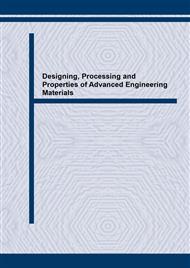p.117
p.121
p.125
p.129
p.133
p.137
p.141
p.145
p.149
Effect of Heating Rate on Transient Liquid Phase Diffusion Bonding of Ni-Based Superalloy GTD-111
Abstract:
This study was carried out to investigate the effect of heating rate on dissolution and solidification behavior during transient liquid phase diffusion bonding of Ni-based superalloy GTD-111. The heating rate was varied by 0.1K/sec, 1K/sec, 10K/sec to the bonding temperatures 1373K and 1423K in vacuum. When the heating rate was slower and the bonding temperature was higher, the completion time of dissolution after reaching bonding temperature decreased. When the heating rate was very slow, the solidification proceeded before reaching bonding temperature and the time required for the completion of isothermal solidification was shorter. However, when the total time required for completion of solidification from the beginning of heating was considered, heating at 0.1K/sec was nearly the same as heating at 10K/sec.
Info:
Periodical:
Pages:
133-136
Citation:
Online since:
March 2004
Authors:
Price:
Сopyright:
© 2004 Trans Tech Publications Ltd. All Rights Reserved
Share:
Citation:


